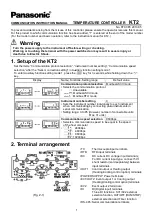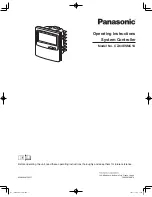
Applications of SDN Operation
2-6
Applications of SDN Operation
Configurations of the SDN will vary from installation to installation. The
SDN is designed to be flexible enough to accommodate a variety of
communication needs in the patient monitoring environment, for the
present and for future expansion. Many hospitals have more than one care
unit. For example, there might be separate care units such as an ICU, a
CCU, an MICU, and an SICU. SDN communication between instruments
can be customized at installation.
One of the applications on the SDN is the OVERVIEW display. This feature
provides a split display screen showing “home bed” and “source bed”
patient information. This OVERVIEW mode can be entered either
manually for observation or automatically upon patient alarm. Any bed/
patient within the same care unit can be displayed in this manner.
Softkeys on the monitor are used to form subgroups under the care of
each nurse, called care groups, to match nursing assignments. The features
of split display screens, message transfer, alarm alert, and care group
configuration are all possible using the digital Serial Distribution Network.
In addition, any defined message can be transmitted via serial digital data
without requiring any changes to network hardware. There are 63
physiological function codes of which 42 are defined and 21 are reserved
for future use. The SDN is flexible enough to accommodate configuration
changes at the bedside instrument via plug-in modules without any system
modifications, user interaction, or hardware changes. Also, SDN
instruments may be disconnected at any time and moved to other system
locations and reconnected without bringing the network down.
Another application on the SDN is the TUNING feature at an Information
Center. This feature provides the ability to choose which patients/beds are
monitored at the IC. Patient information viewed at the IC is displayed in
dedicated positions on the display screen called SECTORS.
The sectors may be individually TUNED to any bedside instrument using
the softkeys. Any number of ICs may tune to the same patient/bed. The
first IC to be tuned to a bedside is called the “primary” IC for that bedside
instrument, and furnishes recordings when requested from that bedside.
Sectors on other ICs displaying the same bedside information are called
“consulting sectors.” All sectors tuned to a given bedside report patient
alarms.
Instrument Communication on the SDN
The ACC is the active node of the SDN. It functions to provide the system
communications link and to control the data flow, timing, synchronization,
and distribution throughout the system. The ACC functions in conjunction
with the SDN interface circuitry located within each instrument connected
to the SDN. The SDN interface circuitry drives and receives SDN data over
Summary of Contents for 78581B
Page 46: ...ACC Maintenance 4 2 ...
Page 54: ...Installation Responsibilities Customer and Agilent Technologies 6 4 ...
Page 90: ...Procedures 8 28 ...
Page 98: ...Contacts 10 6 ...
















































